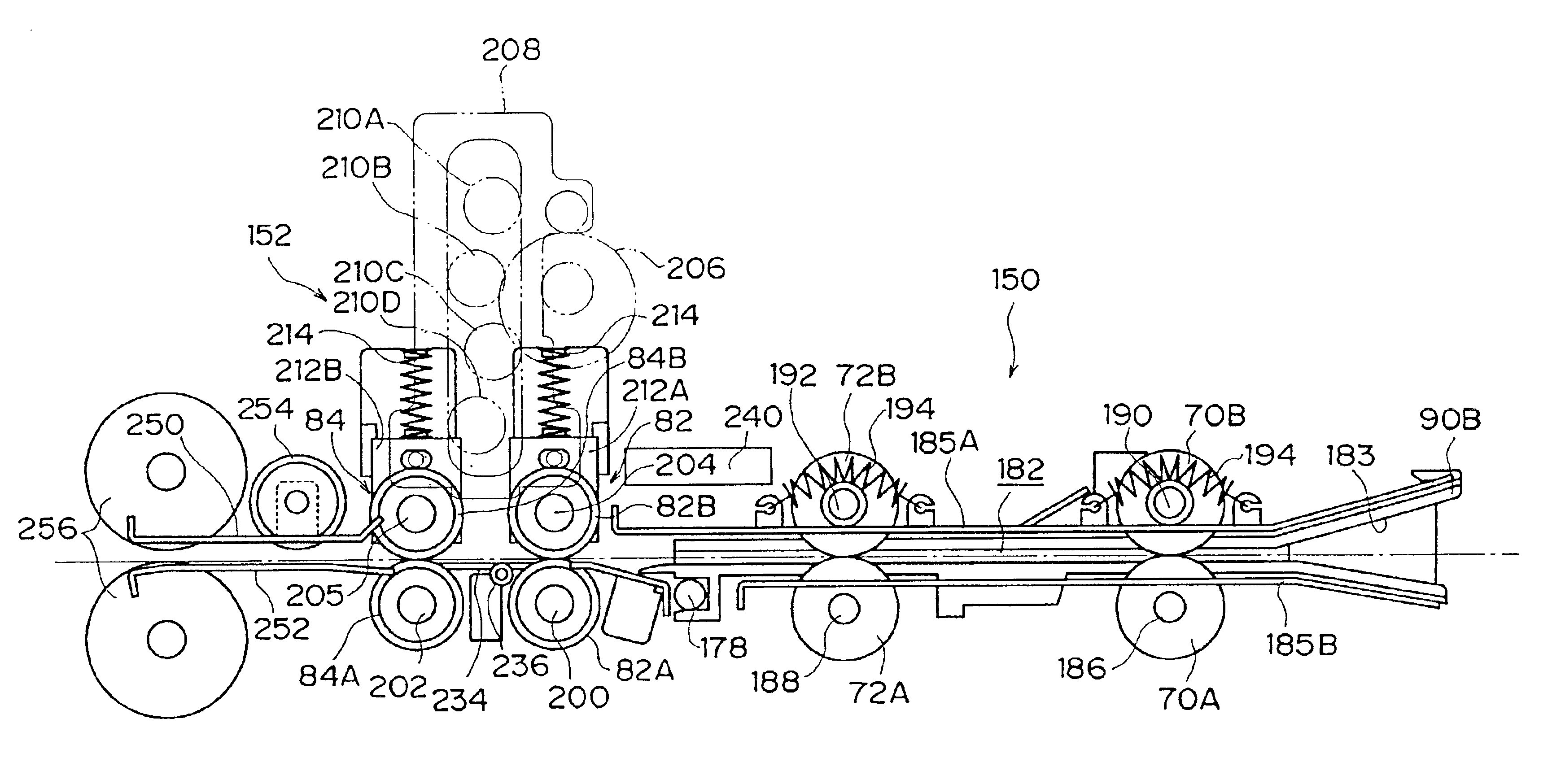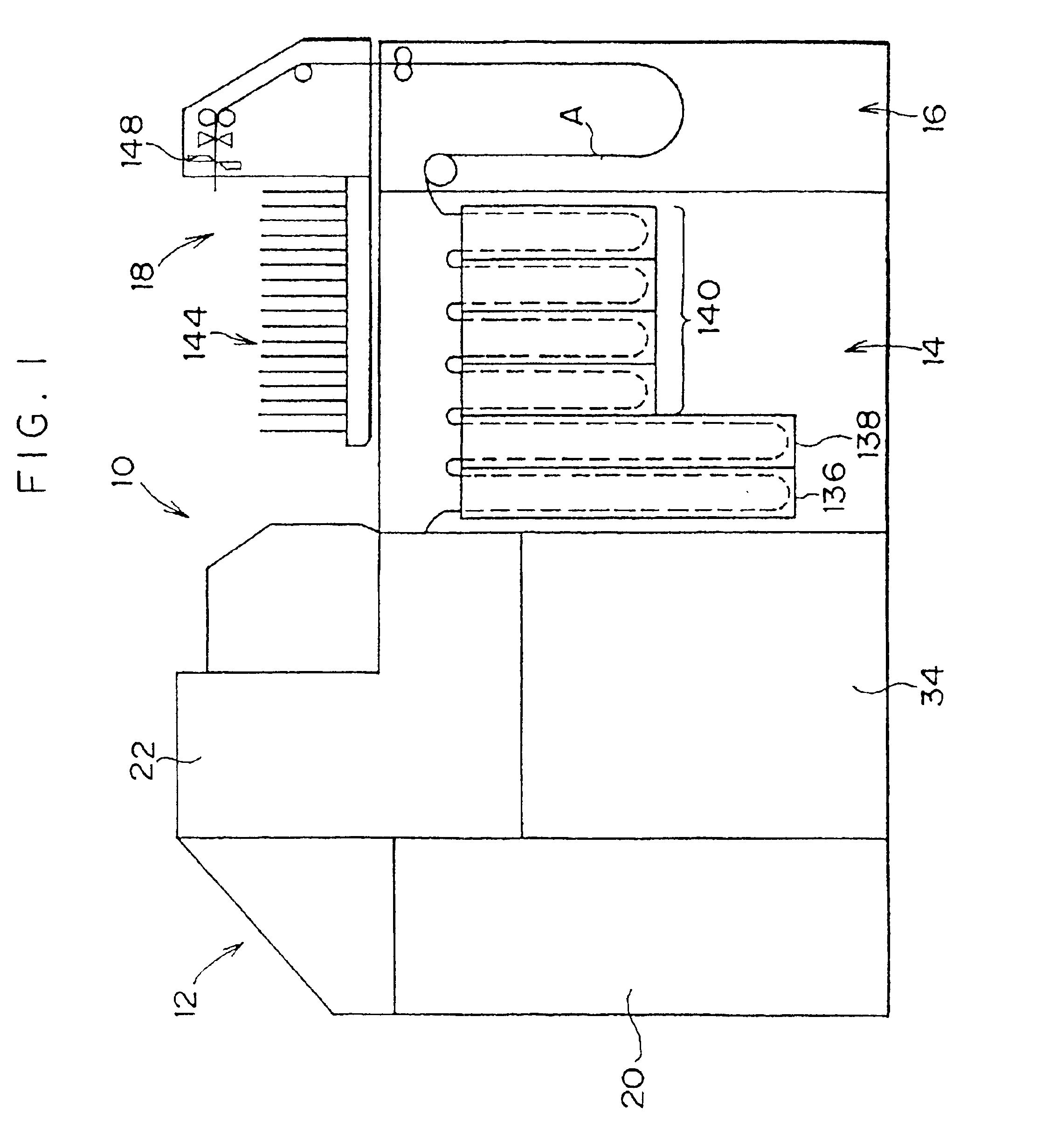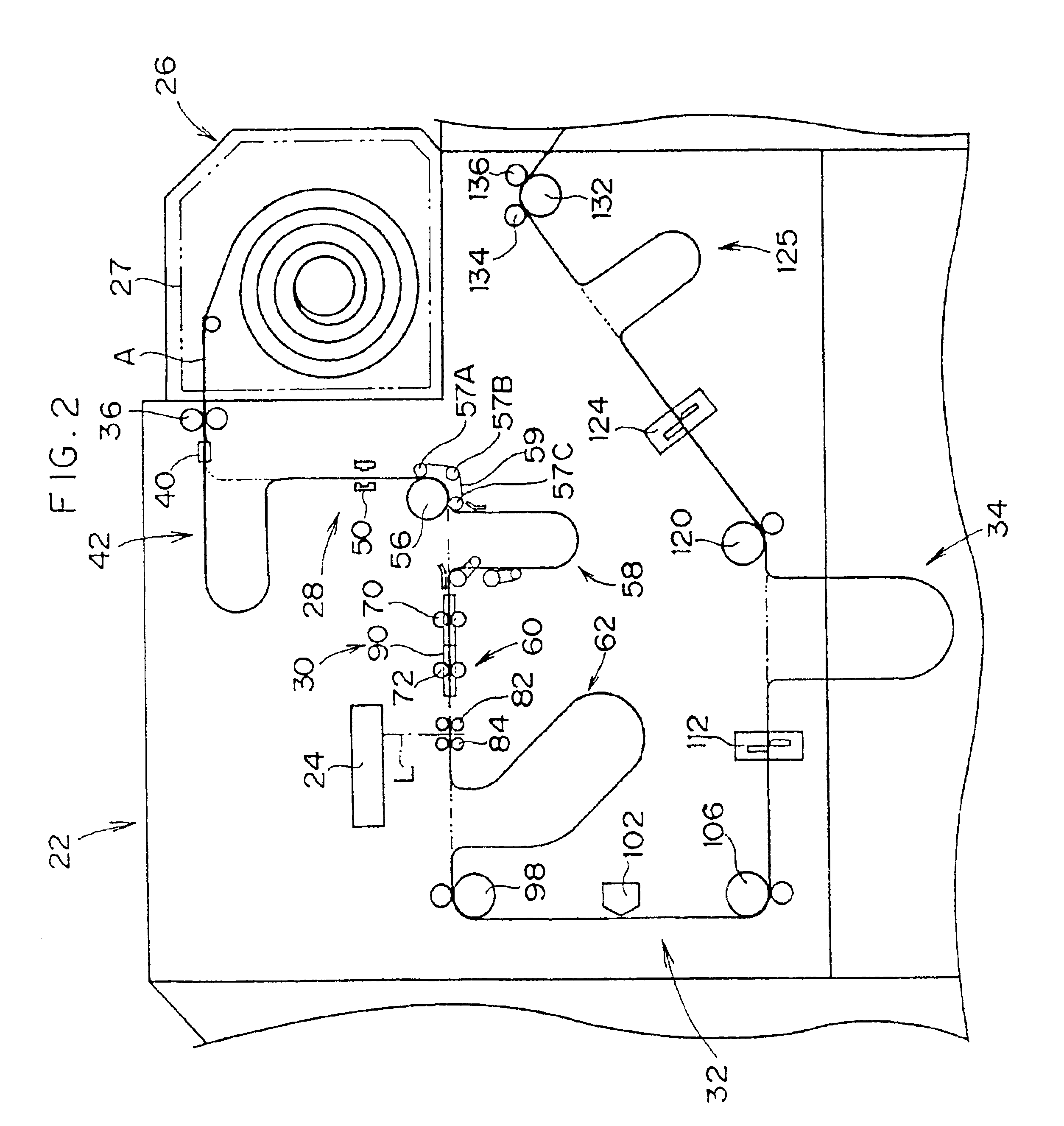Image recording apparatus and method
a technology of image recording and recording position, which is applied in the direction of thin material handling, printers, instruments, etc., can solve the problems of inability to accurately form images on photosensitive materials, inability to accurately record images, and inability to adjust the exposure position
- Summary
- Abstract
- Description
- Claims
- Application Information
AI Technical Summary
Benefits of technology
Problems solved by technology
Method used
Image
Examples
Embodiment Construction
Hereinafter, an image recording apparatus and a method of the present invention will be described in detail on the basis of a preferred embodiment shown in attached drawings. First, the overall structure of the image recording apparatus will be described, and then two pairs of nip (conveyance) rollers will be described.
Overall Structure of Image Recording Apparatus
FIG. 1 illustrates an image recording apparatus 10 that is mainly used in a digital photoprinter. The image recording apparatus 10 scan-exposes a photosensitive material A with a light beam to form a latent image, based on exposure conditions (image recording conditions) which have been determined by a setup apparatus in accordance with an image read by an image reading apparatus such as a film scanner, develops and processes the photosensitive material A, and outputs a print on which the image on the film is recorded. The image recording apparatus 10 basically comprises an image recording section 12, a developing section ...
PUM
 Login to View More
Login to View More Abstract
Description
Claims
Application Information
 Login to View More
Login to View More - R&D
- Intellectual Property
- Life Sciences
- Materials
- Tech Scout
- Unparalleled Data Quality
- Higher Quality Content
- 60% Fewer Hallucinations
Browse by: Latest US Patents, China's latest patents, Technical Efficacy Thesaurus, Application Domain, Technology Topic, Popular Technical Reports.
© 2025 PatSnap. All rights reserved.Legal|Privacy policy|Modern Slavery Act Transparency Statement|Sitemap|About US| Contact US: help@patsnap.com



